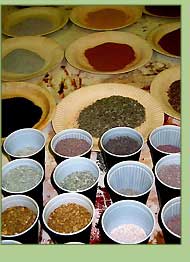|
|
| |
|
|
| |
| The Stone as a Sign
Each stone is original. Each stone tells us a different story. A story embracing the progress of time till into our present day. The stones' language is the most elementary language of existence: it is the language of continual Becoming. It cannot be understood with the filleting and categorizing methods of natural science. You have to participate in the shaping process of energy influence, you have to integrate this material into a creative process, you have to affirm the principle of Becoming to understand it. No verbal explanation but an aesthetic, holistic, even mysterious experience. The stone in one's hand is the sign of that which is currently absent, is the enormously complex trace left by energy. Nevertheless, the stone is not just something construed, it is something in itself. The stone is the image of eternity.
|
 |
|
| |

|
The Creative Process
The creative process does not start in the studio but in the middle of nature. I prefer to search in places where the earth's surface is opened up, on riversides and river mouths, in quarries and suchlike. The rock of the landscape shall overtly show the signs of the friction, pressure, grinding, burning of the elements (water, earth, wind, fire, metal). The thousands of years of the energy's influence shall reveal themselves in the stone's material condition. Its colour, form, firmness shall speak to us aesthetically.
|
 |
Later the substance gets crushed several times, is newely mixed and integrated into an artistic idea in which its material qualities begin to communicate. The qualities of the material gain in importance and affect the aesthetics and the content of the paintings as autonomous elements. The sensuous "material-paintings" are provided with elevations and shadows, traces and signs, rough and mat surfaces which encourage touching. |
|
| |
Is that still painting?
What is new is the combination of the painting's two-dimensonality with the stone's three-dimensonality. The material stone is worked in an unusual way, namely in a painterly and not in sculptural one. The result are "material-paintings" that can be felt and touched with one's eyes. The stone gets crushed to such an extent that it is no longer sculptural. Although not thus far, that it becomes pure colour pigment. There is a relationship to the genre of relief that traditionally tries to gain painterly effects by sculptural techniques. However, here the relationship is turned round: Though at first the stone is worked with hammer and chisel - the tools of the sulptor -, it is applied to the canvas with the techniques of the painter so that it turns its inmost material qualities to the outside. |
 |
|
| According to Gehlen - in his philosophy of art "Zeit-Bilder" (images of time) - tactual paintings (B. Schultze) or tactual objects (E. Schumacher) are a type of identity confusion. One should have a sensory perception that would be situated exactly between sight and touch. Here both senses are confused. The tactual picture evokes the question: "Is that still painting?" Which cannot be answered with a clear no or yes. The traditionally orientated verdict is just as inadequate for this type of picture as an uncritical affirmation. The "objective vagueness" is an essential in this type of art. With it these works of art are characterised by a kind of "weigthlessness" corresponding to our own reflected psychological state. |
| |
|
|
| |
|
|
|
| |
|
|